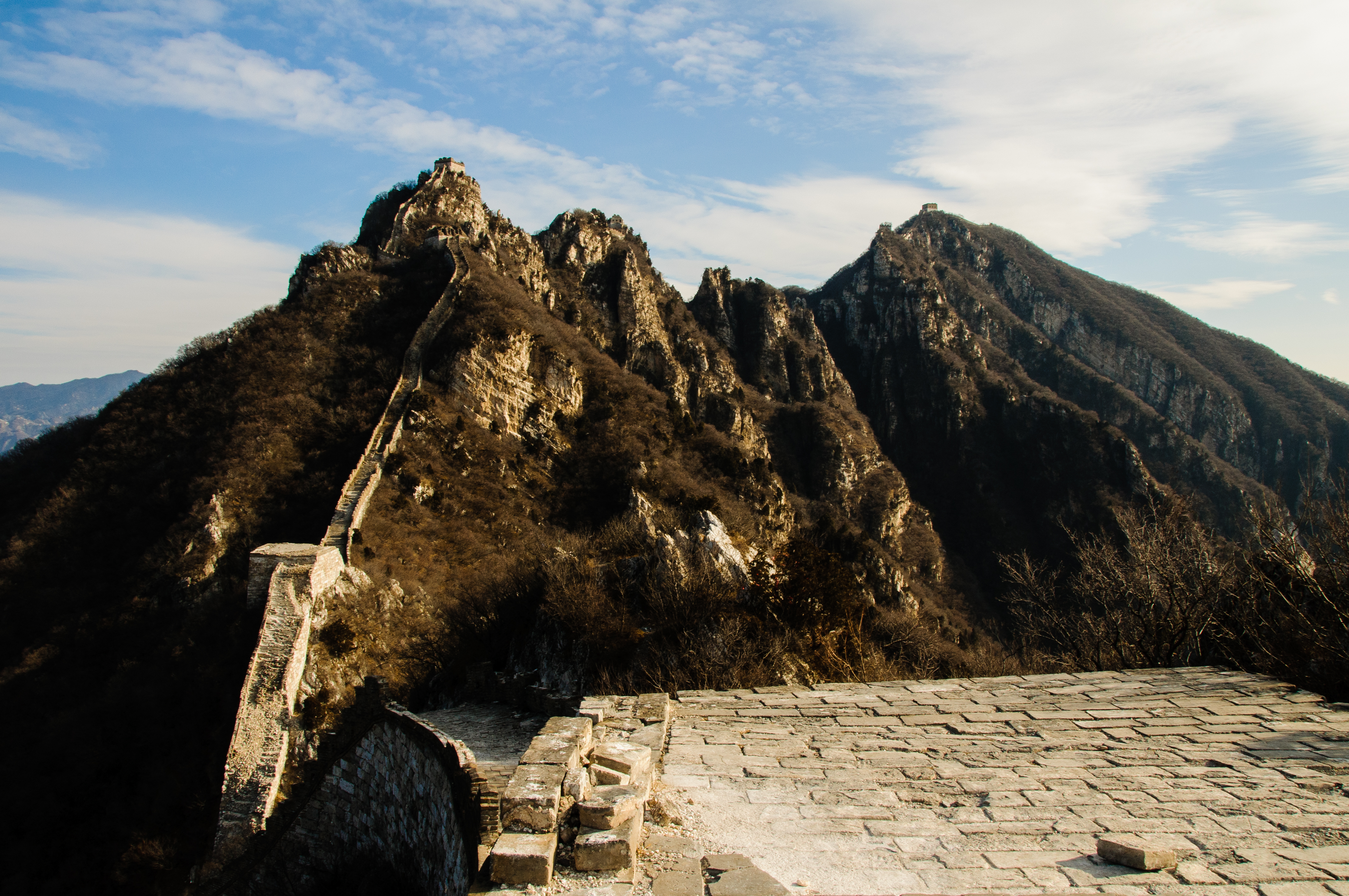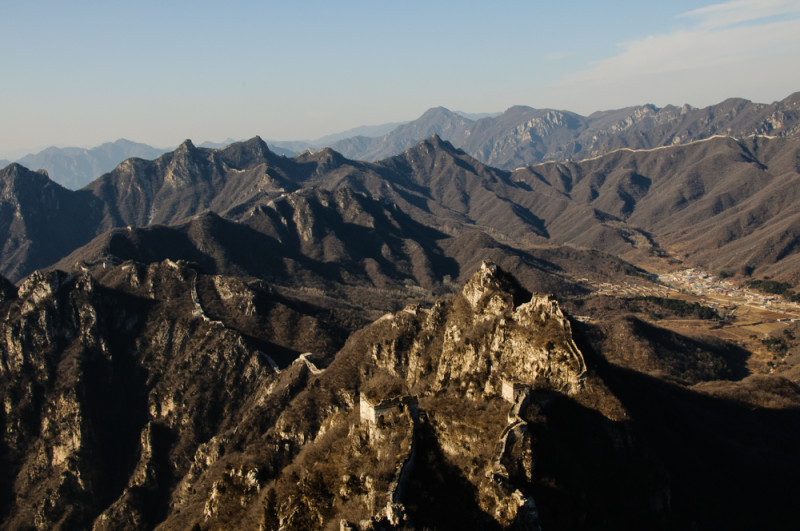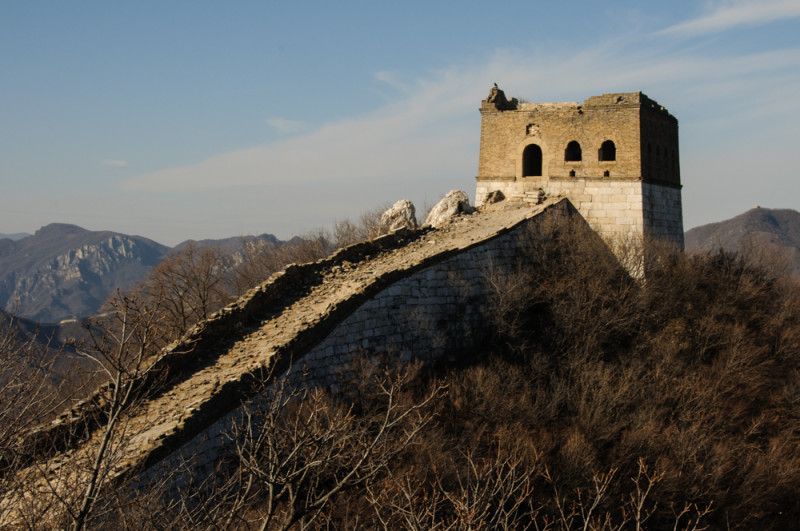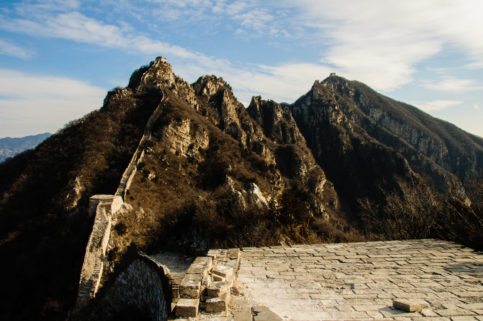Travel China | Uncover a secret Great Wall of China near Beijing

Huairou Beijing, CN – View of “Arrow Nock” along the Great Wall of China Jiankou (Ian YacobucciBorderless Travels)
As an untouched section of the Great Wall of China, Jiankou offers an authentic and remote experience that is unparalleled. Easily accessible from Beijing, it is by far the most authentic and exceptional testimony of ancient China’s civilization making it the best place to experience the Great Wall.
Jiankou is not easy to get to on your own, but finding a way to this exotic location offers a truly genuine journey to the most historically significant destinations in China, and winter is the best time to do it.
A telephone rang; black and antique, with a bronze rotating dial from another era, it vibrated violently on the bedside table waking me from a deep late morning sleep after a 6 am arrival in Beijing. “Aie an? This is Sonja,” spoke the female voice with a Chinese accent on the other end of the line. It was our tour guide checking in before our Christmas day journey to one of the most rugged and beautiful sections of the Great Wall of China.
We chatted about how I was able to email her from my google account, nefariously circumventing what is known here as the “Great Firewall”. A massive government operation that monitors and blocks the general public from access to an open and free Internet; there’s no Google or Facebook beyond China’s Great Firewall. Holding the phone to my ear, semi conscious with my eyes closed, I confirmed our meeting time, “don’t forget to bring gloves” Sonja reminded before hanging up.

Huairou Beijing, CN – Hiking a stair like section of the Great Wall of China Jiankou (Ian YacobucciBorderless Travels)
Wild and unrestored, Jiankou is the most exotic sections of the Great Wall of China that is accessible from just outside Beijing. There’s a good chance that if you’ve come across a remarkable photograph of the Great Wall snaking its way along forested mountain ridges and sharp cliffs, it’s probably been taken somewhere along the Jiankou’s three sections.
East, west, and middle sections of Jiankou often appear to defy logic when you try to fathom that this part of the Great Wall was constructed roughly 600 years ago and stands more than six meters high and five across, excluding the base that’s dug two meters into the mountainous rocky surface. In that time there were no motorized vehicles, no highways and no modern technology, yet somehow the subjects of China’s ancient dynasties worked this seemingly inaccessible and rugged landscape to protect their empires from outside intruders.
My previous visit to Jiankou was back in the summer 2010 when my roommate at a Korean summer camp told me that Jiankou was by far the best section of the Great Wall to explore. Back then there wasn’t much information about it on the Internet so, banking on a post from on an old forum thread, I ended up adventuring there on public transportation with a Canadian couple I had met on my solo travels. Our visit then was abruptly shortened when I slipped on a cliff-like section of the wall we were climbing and took a large coin size chunk of skin out of my shin.
This time around was a little different. Instead of trying to figure out the public transportation system, use sign language for taxi negotiations, wonder if we were going to the right place for the right price, and realizing that the trip only offers the possibility of visiting a small section of the Great Wall before having to rush back to the taxi just to catch a glimpse of an ancient, untouched, and obscure section of the Great Wall; I organized a private tour to Jiankou.
My wife and I met our guide Sonja from China Travellers at Dongsishitiao station. Quickly firing off some Mandarin she helped us order a couple of egg sandwiches from a street side vendor outside the station before heading to the car. Waiting for us in the parking lot of the Swiss Hotel Beijing was a white Malibu with tinted black windows, our modern chariot to the Great Wall, and with a few quick introductions to our driver we were off.
The ride from downtown Beijing to Jiankou takes around two and a half hours and meanders into the mountains of Beijing’s Huairou District. From passenger windows, a country in transition is exposed as the city slowly becomes rural farmland contrasting old and new. Along the highway the lumbering overpasses of the future bullet train, being build for the 2022 winter Olympics, sit in the middle of fields that have been cultivated for generations.
As the traffic dissipates the highway gradually becomes country-roads, the flat fields turn to rolling hills and in no time you’re driving through the valleys between towering mountains. In winter here, the forest sleeps in a deadened grey slumber. Driving through the mountains elderly men and women, hired by the state to watch for fire, sit along the roadside wearing bright orange vest like pylons marking a drought ridden region.
Eventually, we turned off the paved road and parked next to a barren dirt field where we stepped out of the car to meet our hiking guide Lin. Lin was a spryly 60-year-old local with weathered skin, a gentle demeanour and a long face. To shield him from the winter weather he dawned a faded blue military style winter hat along with with a worn navy winter coat that almost reached his knees, and black Air Jordans with bright red accents on the sole.
As a local farmer Lin shared stories through our guide Sonya about life growing up in the area before revealing his energy with a smooth stride and spring in his step as we started our hike. Struggling to keep up on the first leg of our hike, we watched Lin effortlessly navigate the inclined hiking trails to “Arrow Nock,” one of the steepest and most picturesque sections of Jiankou and the Great Wall of China. Breathlessly we trailed from behind as we followed him through the forest where he was raised. After around 30 minutes of hiking, we broke out of the and trees climbed onto the most scenic location of the Great Wall of China. The impressive view was intensified by wintery blue skies, whisping clouds, and a clear view to the horizon; this was only our introduction to China’s ancient Great Wall.

Huairou Beijing, CN -Looking out across
Jiankou’s Arrow Nock Great Wall of China from above (Ian YacobucciBorderless Travels)
After our warm up hike, a walk along the cliff like structures of the Arrow Nock section of the Great Wall and four dozen photos, we headed back to the car to start our official hiking tour. As we drove to our next hiking spot we mentioned to Sonya our surprise by Lin’s athleticism and learned that he had been living near the Jiankou section of the Great Wall since the time before the regional roads existed, which meant that walking up and over the wall was the only way to visit the larger neighbouring town nearest his village.
Our hike with Lin spanned roughly ten kilometers of the Great Wall and took us from Jiankou’s abandoned and unrestored east section to Mutanyu (one of the most famous and recently restored sections of the Great Wall). This meant that we could explore and feel the deep connection that comes with hiking along Jiankou’s rugged and untouched beauty, followed by a more touristy visit to Mutanyu before finishing the adventure off with a toboggan ride down the mountainside, lunch, and dozing drive back Beijing.
Our hike took us about three and a half hours and filled our day with clear blue skies, visibility that reached the horizon, new friends, and an epic trek along the Great Wall of China’s most spectacular locations. We also got to experience the less visited and wild Jiankou with the opportunity to contrast it with the official tourist highlight of the Mutanyu section of the Great Wall.

Huairou Beijing, CN – A watch tower along the Jiankou hiking section of the Great Wall of China Jiankou (Ian YacobucciBorderless Travels)
Typically, especially in the more popular summer months, visibility can often be quite limited and the bloated tourist numbers can take away from an authentic experience. We found that winter was the best time of the year to visit the Great Wall of China because tourist numbers are low and visibility is high (a contrast to the humid summer). During our hike from Jiankou to Mutanyu we did not see a single tourist until we reached Mutanyu, and since it was winter even a popular section like Mutanyu had only a few dozen people.
Planning a guided tour was the best decisions we could have made for our visit to the Great Wall of China. Although it can be more expensive than other alternatives, our experience with a local guide who helped us explore the less visited sections of the wall safely with a unique knowledge of the area coupled with the comfort of an organized ride that dropped us off in one section of the Great Wall and picked up at another, the addition of an English speaking guide like Sonja to organize it all, and the ease of booking online made our unique experience safe, effortless, and fulfilling.
We can’t wait to come back and explore another section of the Great Wall upon our next visit to Beijing and hope that you too will find the joys of exploring the Great Wall of China by adventuring off the beaten path and hiking along it the way it was meant to be explored.
For more information about how to book a trip like this visit www.chinatravellers.com
Been to the Great Wall!! Tell us about your recent visit to the Great Wall of China by sharing your experience and advice with our readers in our comments below.











